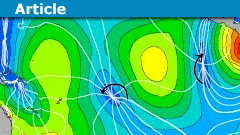
Beyond the Tidal Bulge
/
8 Comments
Overview
That there is no tidal bulge is the key premise of this article. Upper-level oceanography undergraduates and above know this. Yet the tidal bulge…

The Many Faces of Topology
Abstract
Topology as a branch of mathematics is a bracket that encompasses many different parts of mathematics. It is sometimes even difficult to see…

Brownian Motions and Quantifying Randomness in Physical Systems
Stochastic calculus has come a long way since Robert Brown described the motion of pollen through a microscope in 1827. It's now a key player in data science,…
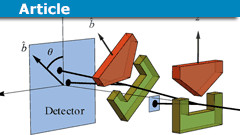
PBS Video Comment: “What If Physics IS NOT Describing Reality”
PBS Space Time produces some very good videos on the foundations of quantum mechanics (QM), so let me comment on their video What If Physics IS NOT Describing…

Aspects Behind the Concept of Dimension in Various Fields
Abstract
It took until the last century for physicists and mathematicians in the Netherlands to question the Euclidean concept of dimension as length,…
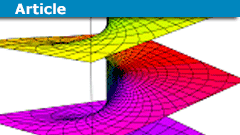
Views On Complex Numbers
Abstract
Why do we need yet another article about complex numbers? This is a valid question and I have asked it myself. I could mention that I wanted…
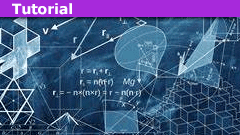
Addition of Velocities (Velocity Composition) in Special Relativity
The "Addition of Velocities" formula (more correctly, the "Composition of Velocities" formula) in Special Relativity[tex]\frac{v_{AC}}{c}=\frac{ \frac{v_{AB}}{c}+\frac{v_{BC}}{c}…

Schrödinger’s Cat and the Qbit
The concept of quantum superposition (or superposition for short) is very counterintuitive, as Schr##\ddot{\text{o}}##dinger noted in 1935 writing [1],…

The Slinky Drop Experiment Analysed
The slinky drop is a rather simple experiment. In its most basic form, it requires only a popular toy for children, a stable hand, and a keen eye.…
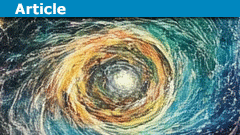
Is the Universe Finite, or Is It Infinite?
Standard cosmological models come in three flavors, open, flat, and closed,[Carroll] whose spatial curvatures are negative, zero, and positive. The open…

The Lambert W Function in Finance
Preamble
The classical mathematician practically by instinct views the continuous process as the "real" process, and the discrete process as an approximation…

Why Division by Zero is a Bad Idea
A division by zero is primarily an algebraic question. The reasoning therefore follows the indirect pattern of most algebraic proofs:
What if it was allowed?
Then…
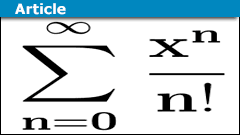
Series in Mathematics: From Zeno to Quantum Theory
Introduction
Series play a decisive role in many branches of mathematics. They accompanied mathematical developments from Zeno of Elea (##5##-th century…
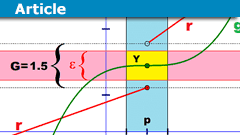
Epsilontic – Limits and Continuity
Abstract
I remember that I had some difficulties moving from school mathematics to university mathematics. From what I read on PF through the years, I…

The Poor Man’s Milli-Ohm Meter
Introduction
In a previous article on measuring battery internal resistance, a simple technique for low-resistance measurement was outlined. In this article,…
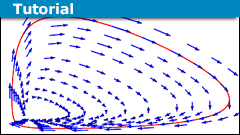
Differential Equation Systems and Nature
Abstract
"Mathematics is the native language of nature." is a phrase that is often used when it comes to explaining why mathematics is all around in natural…
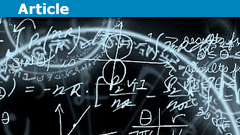
Beginners Guide to Precalculus, Calculus and Infinitesimals
Introduction
I am convinced students learn Calculus far too late. In my view, there has never been a good reason for this.In the US, they go through…

What Are Numbers?
Introduction
When doing mathematics, we usually take for granted what natural numbers, integers, and rationals are. They are pretty intuitive. Going…
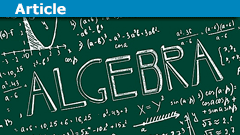
Introduction to the World of Algebras
Abstract
Richard Pierce describes the intention of his book [2] about associative algebras as his attempt to prove that there is algebra after Galois…

Why ChatGPT AI Is Not Reliable
I'll start with the simple fact: ChatGPT is not a reliable answerer to questions.To try to explain why from scratch would be a heavy lift, but fortunately,…

How Quantum Information Theory Solves “the only mystery” of Quantum Mechanics
In Chapter 37 of "The Feynman Lectures on Physics Volume 1," Richard Feynman famously wrote that the mystery of wave-particle duality in the double-slit…
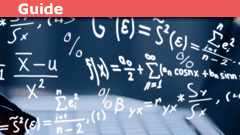
What Are Infinitesimals – Advanced Version
Introduction
When I learned calculus, the intuitive idea of infinitesimal was used. These are real numbers so small that, for all practical purposes (say…

When Pro Scientists Explain Using Pop Science
Abstract
There is so much to say about the many endeavors by professional scientists to explain to us the world. The list is long: Carl Sagan, Harald…

An Overview of Complex Differentiation and Integration
Abstract
I want to shed some light on complex analysis without getting all the technical details in the way which are necessary for the precise treatments…
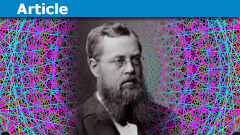
When Lie Groups Became Physics
Abstract
We explain by simple examples (one-parameter Lie groups), partly in the original language, and along the historical papers of Sophus Lie, Abraham…

Why There Are Maximum Mass Limits for Compact Objects
In this article, we will look at why there are maximum mass limits for objects that are supported against gravity by degeneracy pressure instead of kinetic…
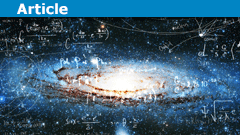
Oppenheimer-Snyder Model of Gravitational Collapse: Implications
Part 1: OverviewPart 2: Mathematical DetailsPart 3: ImplicationsIn the last article in this series, we finished up with a metric for the Oppenheimer-Snyder…
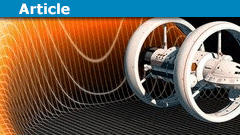
What Are Tensors and Why Are They Used in Relativity?
If you try learning general relativity, and sometimes special relativity, on your own, you will undoubtedly run into tensors. This article will outline…

Oppenheimer-Snyder Model of Gravitational Collapse: Mathematical Details
Part 1: OverviewPart 2: Mathematical DetailsPart 3: ImplicationsIn a previous article, I described in general terms the model of gravitational…
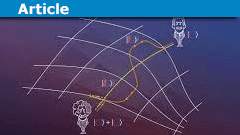
When Discussing the Twin Paradox: Read This First
This article is intended for anyone who wants to start a thread here at Physics Forums on the twin paradox. There are already many, many threads here on…
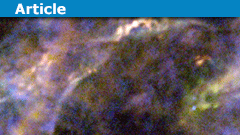
The Oppenheimer-Snyder Model of Gravitational Collapse: An Overview
Part 1: OverviewPart 2: Mathematical DetailsPart 3: ImplicationsMost people who have spent any time at all studying GR are familiar with the…
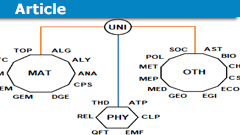
Classification of Mathematics by 42 Branches
I often read questions about our classification scheme that we use on physicsforums.com to sort posts by science fields and subjects, what has…

Counting to p-adic Calculus: All Number Systems That We Have
An entire book could easily be written about the history of numbers from ancient Babylon and India, over Abu Dscha'far Muhammad ibn Musa al-Chwarizmi (##\sim…
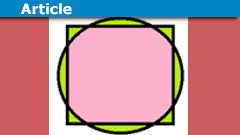
Évariste Galois and His Theory
* Oct. 25th, 1811 † May 31st, 1832
... or why squaring the circle is doomed.
Galois died in a duel at the age of twenty. Yet, he gave…
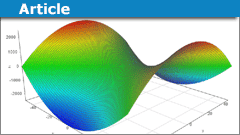
Yardsticks to Metric Tensor Fields
I asked myself why different scientists understand the same thing seemingly differently, especially the concept of a metric tensor. If we ask a topologist,…

P vs. NP and what is a Turing Machine (TM)?
P or NP
This article deals with the complexity of calculations and in particular the meaning of
##P\stackrel{?}{\neq}NP##
Before we explain what P and…

Quantum Computing for Beginners
This article provides an accessible introduction to quantum computing, a cutting-edge technology that processes certain types of information much faster…
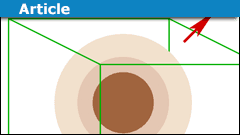
A Physics Misconception with Gauss’ Law
Introduction
It is relatively common to see the following type of argument:
The surface area is ##A## and the enclosed charge is ##Q##. The electric…

How Can We Jump When the Ground Does No Work?
It is relatively common on Physics Forums to see arguments that are effectively similar to the following:
When we jump off the ground, the ground does…
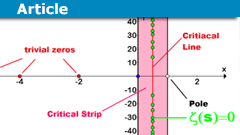
The History and Importance of the Riemann Hypothesis
Riemann Hypothesis History
The Riemann Hypothesis is one of the most famous and long-standing unsolved problems in mathematics, specifically in the field…

Symmetry Arguments and the Infinite Wire with a Current
Many people reading this will be familiar with symmetry arguments related to the use of Gauss law. Finding the electric field around a spherically symmetric…
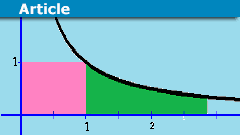
The Amazing Relationship Between Integration And Euler’s Number
We use integration to measure lengths, areas, or volumes. This is a geometrical interpretation, but we want to examine an analytical interpretation that…

Superdeterminism and the Mermin Device
Superdeterminism as a way to resolve the mystery of quantum entanglement is generally not taken seriously in the foundations community, as explained in…
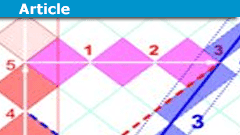
Relativity on Rotated Graph Paper (a graphical motivation)
(based on https://www.physicsforums.com/threads/teaching-sr-without-simultaneity.1011051/post-6588952 and https://physics.stackexchange.com/a/689291/148184…

Probabilistic Factors Involved in Disease and Virus Testing
Introduction
This Insight looks at the various probabilistic factors and related terminology involved in disease and virus testing.As we all know,…
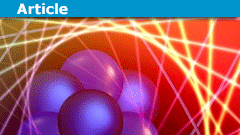
Quantum Physics via Quantum Tomography: A New Approach to Quantum Mechanics
This Insight article presents the main features of a conceptual foundation of quantum physics with the same characteristic features as classical physics…

How Quantum Information Theorists Revealed the Relativity Principle at the Foundation of Quantum Mechanics
This Insight is a condensed version of No Preferred Reference Frame at the Foundation of Quantum Mechanics. Reference numbers here correspond to that paper.…

Quantum Mechanics and the Famous Double-slit Experiment
Double-slit Key PointsQuantum mechanics is known for its strangeness, including phenomena like wave-particle duality, which allows particles to behave…

When Science is Not Enough: Legal and Health Implications of Questions
There are often questions on Physics Forums related to building machines or structures that are left unanswered because of this guideline (found in the…
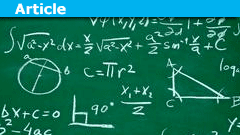
10 Math Things We All Learnt Wrong At School
Some of these could even lead to heavy debates within the scientific community, so maybe I should say: from my point of view. So before you get excited…
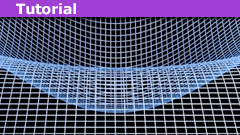
Tolman Law in a Nutshell
The Tolman law describes how the temperature in a fixed gravitational field depends on the position (see https://arxiv.org/abs/1803.04106 for a pedagogic…
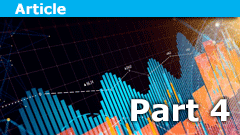
Posterior Predictive Distributions in Bayesian Statistics
Confessions of a moderate Bayesian, part 4
Bayesian statistics by and for non-statisticiansRead part 1: How to Get Started with Bayesian StatisticsRead…

How Bayesian Inference Works in the Context of Science
Confessions of a moderate Bayesian part 3
Read part 1: How to Get Started with Bayesian Statistics
Read part 2: Frequentist Probability vs Bayesian ProbabilityBayesian…
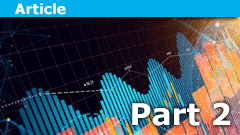
Exploring Frequentist Probability vs Bayesian Probability
Confessions of a moderate Bayesian, part 2
Read Part 1: Confessions of a moderate Bayesian, part 1Bayesian statistics by and for non-statisticianshttps://www.cafepress.com/physicsforums.13280237
Background
One…

How to Get Started with Bayesian Statistics
Confessions of a moderate Bayesian, part 1
Bayesian statistics by and for non-statisticianshttps://www.cafepress.com/physicsforums.13265286
Background
I…

Introduction to Electric Vector Potential and Its Applications
Main Point: The electric vector potential offers a means of determining the non-conservative component of mixed stationary or quasi-stationary electric…

I Know the Math Says so, but Is It Really True?
I'm sure anyone who has hung out long enough here on Physics Forums has encountered threads that go something like this (I'll use an example based on threads…

Does the Block Universe of Physics Mean Time is an Illusion?
I have written many Insights (and coauthored an entire book) explaining how the puzzles, problems, and paradoxes of modern physics can be attributed to…

Introduction to Pitot-Static Systems in Gliders
Like many others, I have been seeking new and fun things to do during a pandemic. I decided on the new Microsoft Flight Simulator 2020, but the Condor…

Why Bother Teaching Mechanical Energy Conservation?
Note: It is assumed that the reader has read part I and part II of the series.Is Mechanical Energy Conservation Free of Ambiguity?
Can We Do Better…
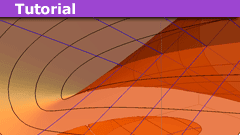
Intro to Centrifugal Force Reversal in Kerr Spacetime
In this article, we will analyze "centrifugal force reversal" in Kerr spacetime, similar to what was done for Schwarzschild spacetime in a previous Insights…

A Principle Explanation of the “Mysteries” of Modern Physics
All undergraduate physics majors are shown how the counterintuitive aspects ("mysteries") of time dilation and length contraction in special relativity…
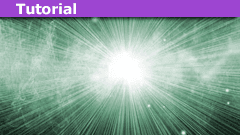
Exploring the Anatomy of Compton Scattering
Introduction
In this article, we take as our starting point the original equations which Compton drew up and solved in his ground-breaking 1925 article: From…

Learning the Twin Paradox for Freely-falling Observers
The "twin paradox" is often discussed in the introductory treatment of special relativity. Under "twin paradox" we understand the fact that if two twins…
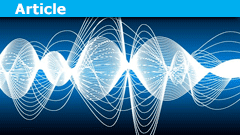
Are Electromagnetic Waves Always Transverse?
In this insight, we shall endeavor in the realm of classical electrodynamics and examine whether EM waves are always transverse. We shall make use of Jefimenko's…

Is Pressure A Source Of Gravity?
In a previous series of articles, I posed the question "Does Gravity Gravitate?" and explained how, depending on how you interpreted the terms "gravity"…
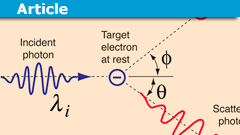
Massive Meets Massless: Compton Scattering Revisited
Introduction
In a previous article entitled "Alternate Approach to 2D Collisions" we analyzed collisions between a moving and stationary object by defining…

Is Science an Authority? How to View Announcements from Scientists
In a previous article, I discussed why scientists (among others) are rarely interested in considering a new theory proposed by a non-scientist: because…

Dark Energy Part 3: Fitting the SCP Union 2.1 Supernova Data
In Part 1 of this 3-part series, I explained kinematics in Einstien-deSitter (EdS) cosmology and in Part 2, I explained kinematics in ##\Lambda##CDM cosmology…

Dark Energy Part 2: LCDM Cosmology
This is Part 2 of a 3-part series explaining evidence for so-called “dark energy” leading to a current positive cosmological acceleration. The evidence…

A Beginner Physics Guide to Baryon Particles
Baryon Introduction
At the beginning of the 20th century, it was thought that all matter consisted of only three particles: the electron, the neutron,…

Slowly Lowering an Object in a Static, Spherically Symmetric Spacetime
In the first two articles in this series, we looked at the Einstein Field Equation and Maxwell's Equations in a static, spherically symmetric spacetime.…
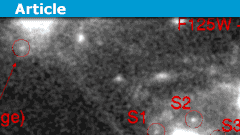
The Reappearance of Supernova (SN) Refsdal
Supernova (SN) Refsdal Key Points Astronomers have been trying to understand space for thousands of years.
Supernova Refsdal was the first known…

Dark Energy Part 1: Einstein-deSitter Cosmology
In this 3-part series, I want to motivate the (re)introduction of the cosmological constant ##\Lambda## into Einstein's equations of general relativity…

The Evolution of the Universe, Cosmic Web and Connections
The universe was not perfectly uniform when it started, some areas had a higher density than others. During the evolution of the universe, these areas…
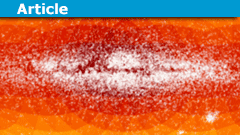
Gaia and the Race to Detect More Gravitational Waves
Gravitational waves (GW’s) are disturbances in spacetime produced by any massive object moving asymmetrically. However, only the most massive and most…
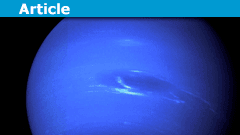
3 Possible Models For Why Uranus Spins on Its Side
Uranus spins on its side. Uranus has an obliquity (tilt) of 98º, making its axis of rotation closer to the ecliptic plane than any other planet. It is…
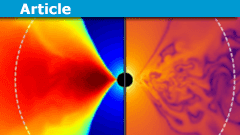
Black Holes Are Not Empty Voids
Black Hole Key PointsBlack Holes (BH’s) have a gravitational pull so strong that nothing, not even light, can escape it
BH’s can be divided…

Can We Do Better Than Mechanical Energy Conservation?
Note: It is assumed that the reader has read part I of the series.
Introduction
The ambiguity and flaws discussed in part I can be resolved using the…

Is Mechanical Energy Conservation Free of Ambiguity?
Introduction
"Close to any question that is in the textbook, there is another question that has never been answered that is interesting."
[Stephen Wolfram,…

What is Evolution: A Beginner’s Guide
Introduction to Evolution
The study of evolution has dominated the field of biology for over a century. Explaining why the life we see is as it is fascinating…

Mathematician Mary Somerville Features in Google Doodle
The Google Doodle for 2 February 2020 celebrated Mary Somerville, the Scottish polymath and science writer, and Caroline Herschel, the joint first-ever…

Accurate Fluid Dynamics By Video Analysis
IntroductionProviding accurate fluid dynamics experiments for undergraduate laboratories is challenging in several ways, including reproducibility,…

Tell One Wood from Another: Basic Wood Anatomy
As a long-time woodworker, I have an interest in being able to tell one wood from another, and in the process of learning how to do that, I've developed…

Learn the Fundamentals of the Diffraction Grating Spectrometer
Introduction
In this article, we will discuss the fundamentals of the diffraction grating spectrometer. The operation of the instrument is based upon…

Intro to the Ionization Energy of Atomic Hydrogen
Introduction
In previous articles relating to various transition energies in Hydrogen, Helium, and Deuterium we have employed the following formula for…

Answering Mermin’s Challenge with the Relativity Principle
Note: This Insight was previously titled, "Answering Mermin's Challenge with Wilczek's Challenge." While that version of this Insight did not involve any…

Exploring Bell States and Conservation of Spin Angular Momentum
In a recent thread, I outlined how to compute the correlation function for the Bell basis states\begin{equation}\begin{split}|\psi_-\rangle &=…
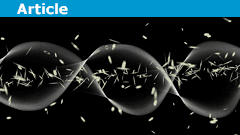
Modern Physics Understood as an Unrecognized Kuhnian Revolution
People often claim on Physics Forums and in the foundations community proper that quantum mechanics is "incomplete." Indeed, Lee Smolin recently wrote…

Relativistic Treatment of the DC Conducting Straight Wire
Introduction
The direct-current-conducting infinitely long wire is often discussed in the context of relativistic electrodynamics. It is of course a completely…
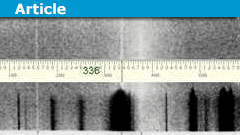
Revisiting The Deuterium Lyman Alpha Line Experiment
Introduction
In this article, we will be revisiting a somewhat understudied (and seemingly unrepeated) experiment to measure the Deuterium Lyman Alpha…

Signature of the Sun: Analyzing the Solar Balmer Series Lines
Introduction
We are in many ways a fortunate generation having so many wonderful tools at our disposal on account of the "silicon revolution". The advent…
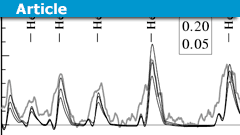
Understanding Bohr’s Helium Lines
Introduction
In a previous article "Calculating the Balmer Alpha Line" we mentioned how accurate predictions of the spectral lines of singly ionized Helium…

How to Zip Through a Rotating Tunnel Without Bumping Into the Walls
Preface
While browsing through unanswered posts in the Classical Physics Workshop, I came across a gem at the link shown below. For the reader's convenience,…

Calculating the Balmer Alpha Line: Atomic Hydrogen
Introduction
Most readers acquainted with the hydrogen spectrum will be familiar with the set of lines in the visible spectrum representing transitions…

Maxwell’s Equations in a Static, Spherically Symmetric Spacetime
In the first article in this series, we looked at the Einstein Field Equations in a static, spherically symmetric spacetime. In this article, we are going…

Understanding Superposition Physically and Mathematically
What is superposition
Superposition is a fundamental concept in physics and mathematics, particularly in the fields of wave theory and quantum mechanics.…

What Thermodynamics and Entropy Means
Introduction
The student of thermodynamics, as they consider pistons and ideal gasses and such, often begin to grasp the nature of entropy only to find…
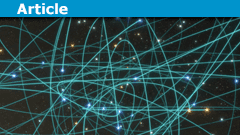
The Einstein Field Equation in a Static, Spherically Symmetric Spacetime
This will be the first of several articles which will provide, for reference, useful equations for static, spherically symmetric spacetimes. This is a…
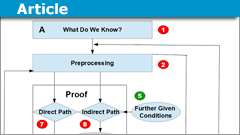
How to Write a Math Proof and Their Structure
Proofs in mathematics are what mathematics is all about. They are subject to entire books, created entire theories like Fermat's last theorem, are hard…
